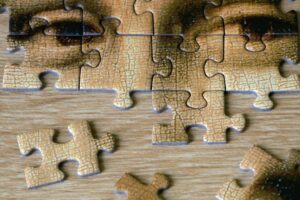
One summer I visited some Norwegian friends who lived near Stockholm. The husband and their two-year-old son took me to the airport for my return flight. There, Håkon eagerly explored under the watchful eye of his father while I checked in. “Flyplassen er så spennende for ham,” I said to the clerk. “Det kan jag tänke mig,” he responded. But when I presented my US passport, he was confused: “How do I talk to you?” We’d been doing fine with my Norwegian and his Swedish. But he couldn’t find a good explanation for what he observed.
What we expect has a profound effect on what we perceive. Apparently the airline clerk expected that an American couldn’t speak Norwegian. Indeed, few of us do. After all, you can get around easily in Scandinavia by speaking English. But when I lived in Norway, speaking Norwegian was well worth the effort. My experience of the place and the people was much richer for it.
Having lived in the Midwest for much of my adult life, I’ve mostly adapted to local ways of doing things. Happily, I’ve found that letting people know I’m from California allows me to get away with being a little different. It works surprisingly well whether it’s relevant or not. Midwesterners don’t really expect what Californians do to make sense. It legitimately explains why I prefer spicy food to bland Midwestern fare, and why I drive a car with a stick shift. It doesn’t fully explain my political views, but it helps me avoid pointless arguments. Making shameless use of their confirmation bias lets me choose my battles.
Fitting the pieces together
Whether in everyday life or in a forensic investigation, we’re always trying to make sense of what we observe. That is, we look for a good explanation of the data. As we’ve discussed previously, the simplest explanation is usually best—don’t start by looking for zebras.
The scientific method is a helpful guide. In its most basic form, it looks like this.
- Use anecdotal observations to help you formulate a hypothesis.
- The hypothesis must be falsifiable. That is, certain data and/or observations could logically prove it to be false. There is no such thing as proving a hypothesis to be true.
- Develop experiments and observations to test the hypothesis. Certain potential outcomes of these experiments could prove the hypothesis false.
- Collect data and observations that falsify the hypothesis or not.
- Once you have your data, you may do some graphing, number crunching, or other processing to help you understand what you’ve observed.
- Based on the preceding steps, draw one or more conclusions.
I like to start with the overall picture and then focus in on the details. Each step sets the context for the ones that follow. At the end, I put all the pieces together to see how they fit. If there are any apparent gaps or contradictions, I investigate further to try to resolve them. It takes more work, but it’s a lot safer than jumping to conclusions.
